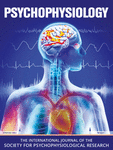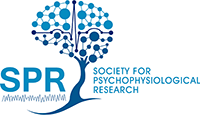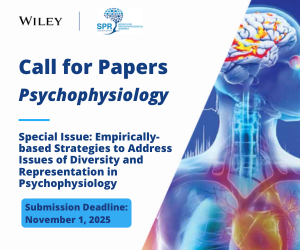Journal list menu
Export Citations
Download PDFs
ISSUE INFORMATION
EARLY CAREER AWARD
The erring brain: Error-related negativity as an endophenotype for OCD—A review and meta-analysis
- First Published: 05 March 2019
Obsessive-compulsive disorder (OCD) has been associated with increased error-related negativity (ERN) amplitudes. The present paper summarizes and integrates results from 38 studies analyzing the ERN in OCD, using a quantitative meta-analysis and examines potential moderators such as task type and symptom severity. Further, results supporting the notion that increased ERN amplitudes represent a promising endophenotype for OCD are reviewed. Finally, the specificity of altered neural error-signals for OCD and its clinical utility are discussed.
ORIGINAL ARTICLES
The reality of “food porn”: Larger brain responses to food-related cues than to erotic images predict cue-induced eating
- First Published: 16 December 2018
Our findings contribute to the understanding of the biological bases underlying individual differences in vulnerability to cue-induced eating, and they represent a step toward identifying new targets for personalized weight control interventions.
Similar time courses for word form and meaning preactivation during sentence comprehension
- First Published: 11 December 2018
Although some recent research has suggested a more limited role for lexical form preactivation than other types of linguistic prediction, the current results align with a majority of language processing studies, in demonstrating that readers of highly constraining sentence contexts can neurally preactivate predictable upcoming word forms (orthographic features) on a similarly rapid time course as semantic information.
An ERP study of cross-modal rhyming: Influences of phonology and orthography
- First Published: 09 December 2018
In the first report of a cross-modal ERP rhyming effect with visual pseudoword primes and auditory word targets, we found effects of both phonology and orthography during the N400 time window—although the spellings of the auditory word targets were never explicitly shown. This pattern is consistent with the coactivation of sublexical orthography and phonology in fluent adult readers as they both read and listen.
Syllables constitute proximate units for Mandarin speakers: Electrophysiological evidence from a masked priming task
- First Published: 18 January 2019
The proximate units principle assumes that languages may differ regarding the primary mental unit of phonological encoding in spoken production. Which representations (syllables or phonemes) constitute functional units for Chinese speakers is controversial. Our findings suggest that speakers retrieved syllables before phonemes, and strengthen the claim that, for Chinese individuals, syllables constitute primary functional representations (“proximate units”).
Latency of skin conductance responses across stimulus modalities
- First Published: 21 November 2018
Effects of emotions on heart rate asymmetry
- First Published: 17 January 2019
We introduced a new cardiac metric with clinical value into the psychophysiological literature. Heart rate asymmetry (HRA) indexes an uneven contribution of decelerations and accelerations to heart rate variability (HRV). Positive emotions (amusement) produced more decelerations in short-term variability to the total short-term variability than negative emotions. We present HRA in the context of facial expression (via facial electromyography and software), subjective ratings, finger temperature, skin conductance, and respiration. The causal link between emotions and HRA contributes to a comprehensive understanding of heart action and emotional processing. Researchers might use HRA indexes to advance psychophysiological studies on the cardiovascular system.
Threat-conditioned contexts modulate the late positive potential to faces—A mobile EEG/virtual reality study
- First Published: 13 December 2018
Impact of humor-related communication elements in natural dyadic interactions on interpersonal physiological synchrony
- First Published: 10 January 2019
Little is known about the conditions that facilitate physiological synchrony of two interlocutors. In this study, the impact of specific linguistic features of ongoing dialogues—the use of humor-related communication elements—was examined. In view of the importance that is attached to the magnitude of interpersonal physiological synchrony in terms of states of relationships, the findings suggest that the use of (reciprocated) humor may speed up the building of rapport among communication partners. The process might be profitably employed in encounters where the fast establishment of a good communication basis is desirable, for instance, in psychotherapy or in collaborative teams.
Do emojis influence social interactions? Neural and behavioral responses to affective emojis in bargaining situations
- First Published: 10 January 2019
In face-to-face communication, information provided by facial expressions affects the social interaction itself. Nowadays, people partially transpose their ways of communication from direct conversation to messaging services. To put emphasis on the meaning of a message or to express mood, intentions, or feelings, emojis are often used. In consequence, this study aimed at investigating the influence of emojis as socioemotional feedback stimuli on behavior and neural responses in a social decision task. As a result, we found that emojis were able to influence neural processing of a certain interaction partner, whereas an impact on behavior was not found.
Thermoalgesic stimuli induce prepulse inhibition of the blink reflex and affect conscious perception in healthy humans
- First Published: 14 December 2018
By using slowly rising temperature (thermoalgesic) stimuli as prepulses for blink reflex responses and Libet's clock to assess conscious stimulus awareness, we demonstrated that prepulse inhibition (PPI) occurs long before the prepulse stimulus reaches conscious perception. We also found a tendency for mutual influence on awareness between prepulse and pulse stimuli during the time the two stimuli reached the central nervous system in close proximity. PPI is, hence, interpreted as an early step in subcortical processing of sensory inputs that contributes to the control of exteroceptive signals in their way to conscious interpretation.
Do body-related sensations make feel us better? Subjective well-being is associated only with the subjective aspect of interoception
- First Published: 10 January 2019
The role of interoception is often mentioned in the context of mental health. This is the first study that investigates how the sensory aspect of interoception (interoceptive accuracy, measured with multiple tasks) relates to subjective well-being. Our findings show that the subjective aspect of interoception (i.e., interoceptive sensibility) is positively associated with subjective well-being, whereas interoceptive accuracy is not. Gastric sensitivity as opposed to heartbeat perception and proprioceptive accuracy moderates the association between interoceptive sensibility and well-being.
Temporal and spectral profiles of conflict processing among multiple frames of reference
- First Published: 18 December 2018
Human performance is determined by interactions of multiple frames of reference (FOR)-based representations. However, the neural mechanism of conflict processing among these FORs is unclear. Our work is the first to explore the neural mechanism of processing multiple FOR-based conflicts using EEG. The results indicated that, although the processing of multiple FOR-based conflicts differed in temporal and spectral dynamics in an early phase, they shared considerable ERP and time-frequency properties in a late phase. Our findings thus highlight the existence of two specific conflict monitoring systems and a general executive control system for the resolution of FOR-based conflicts.






